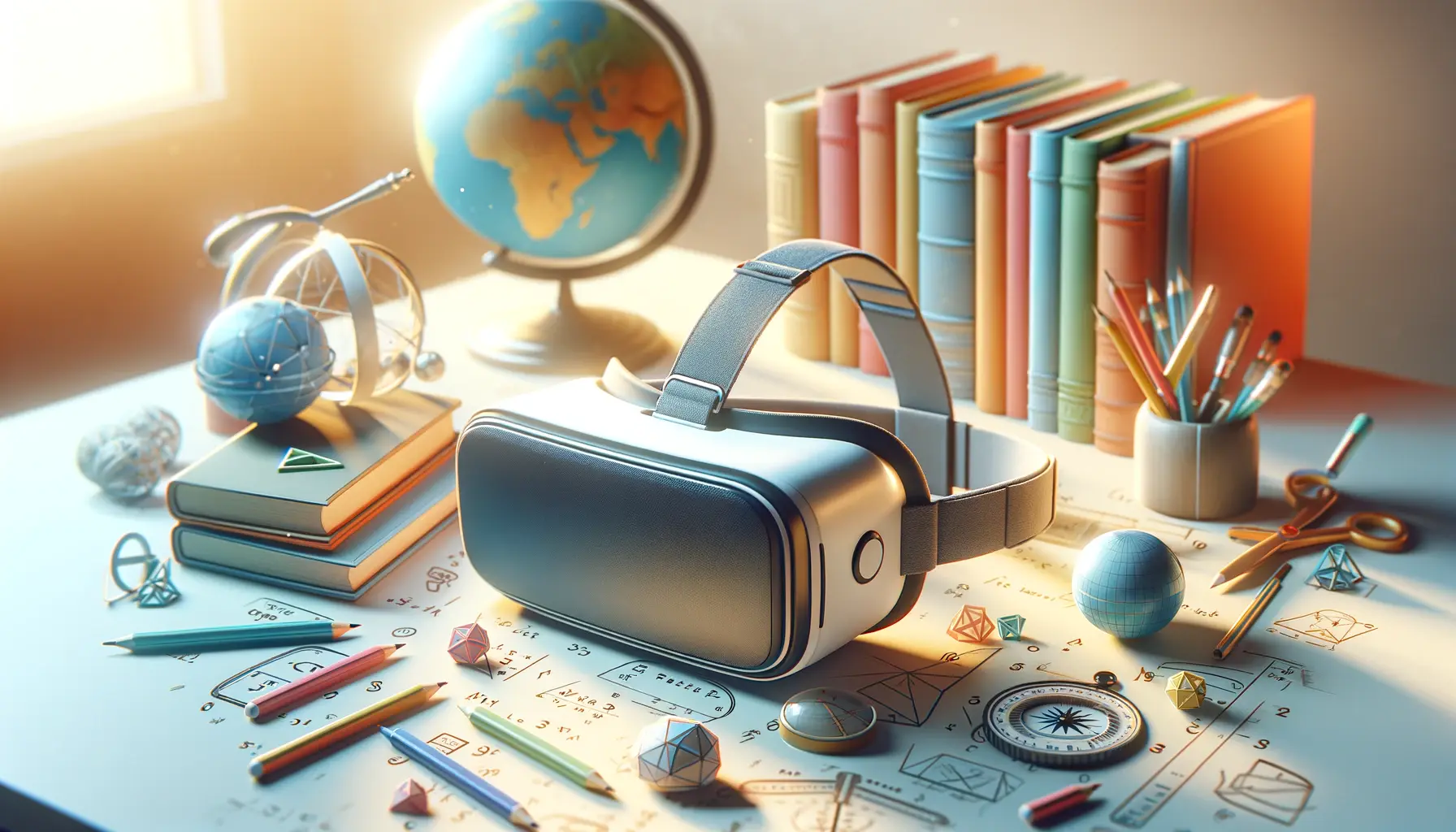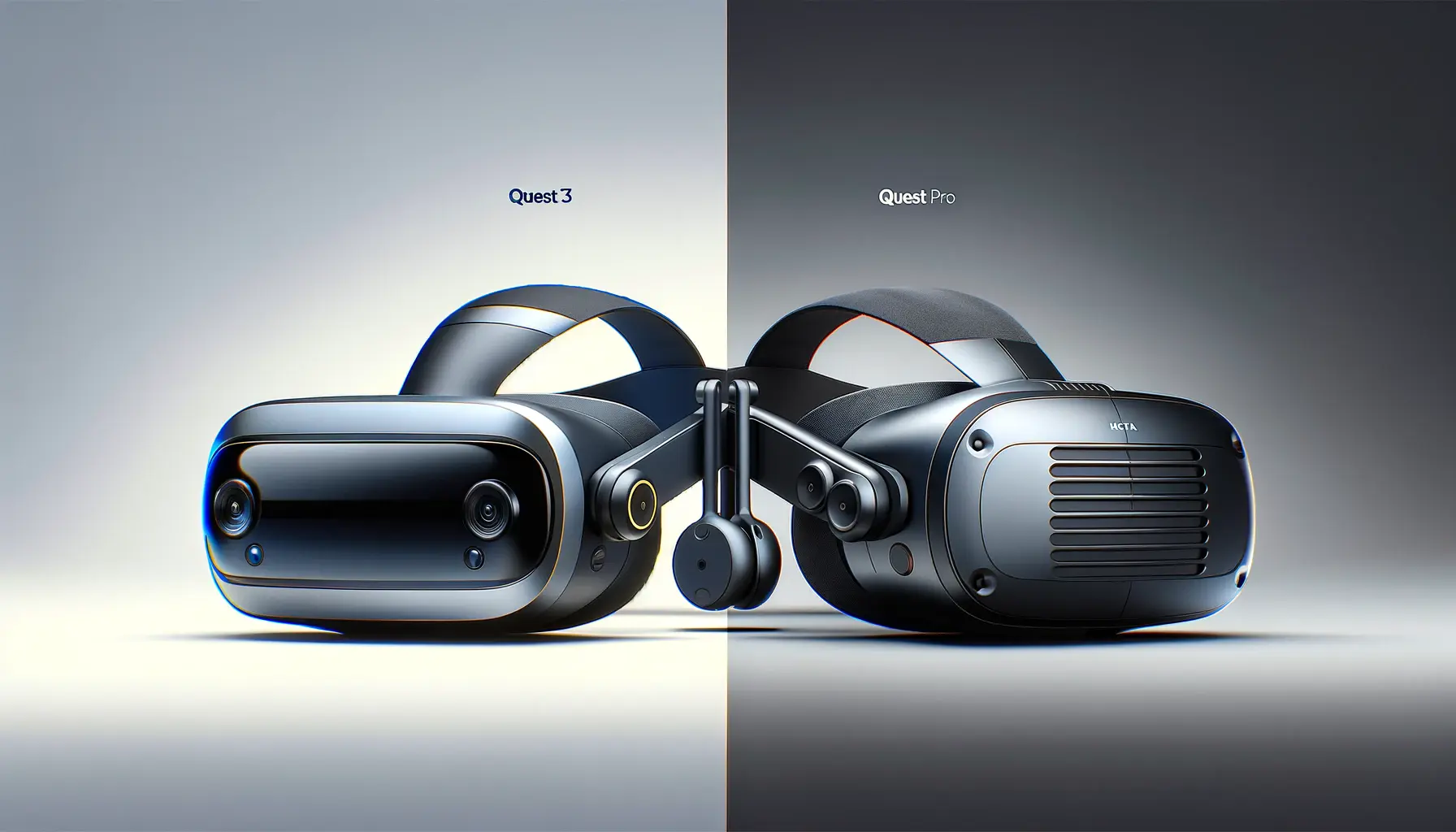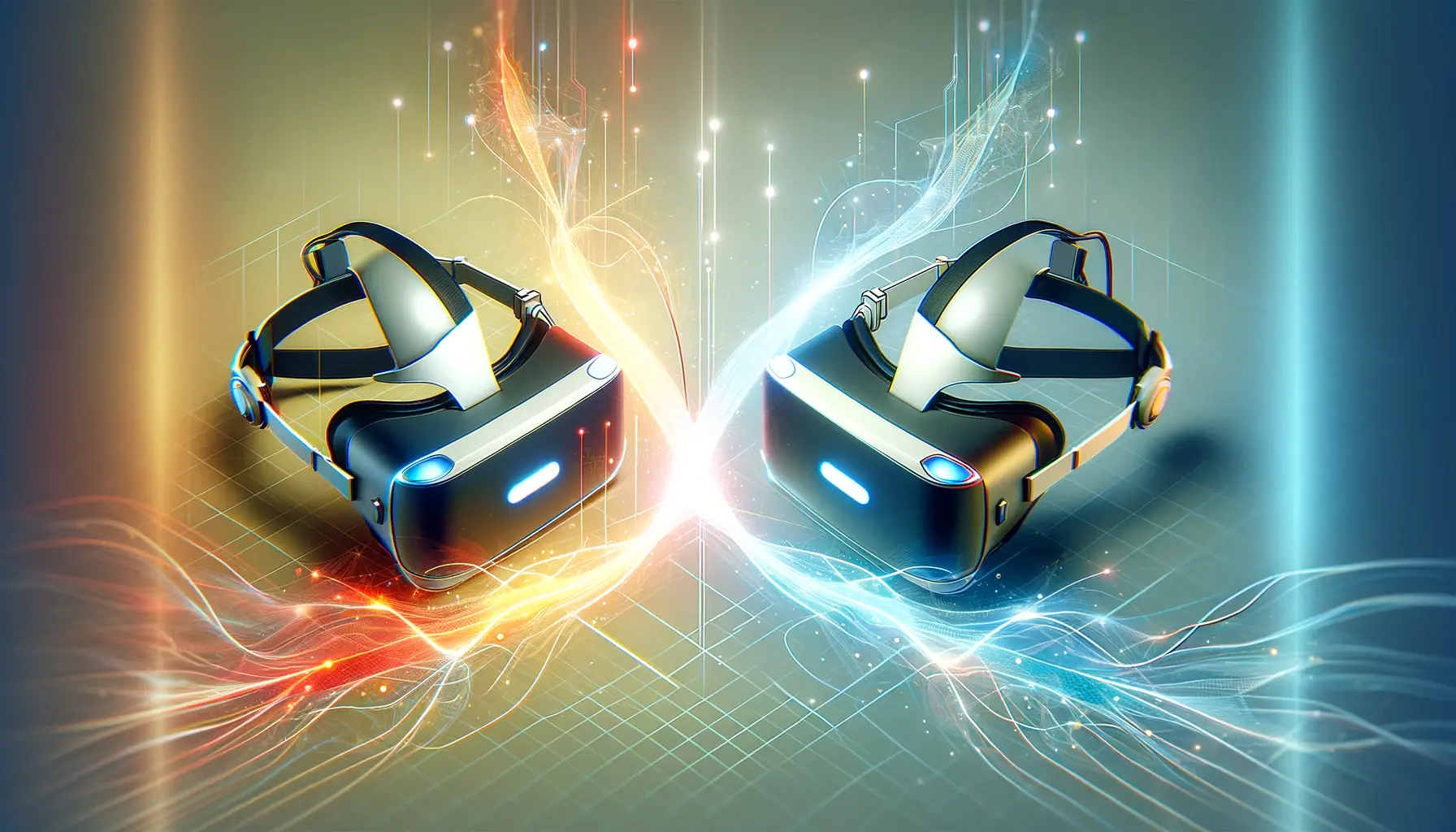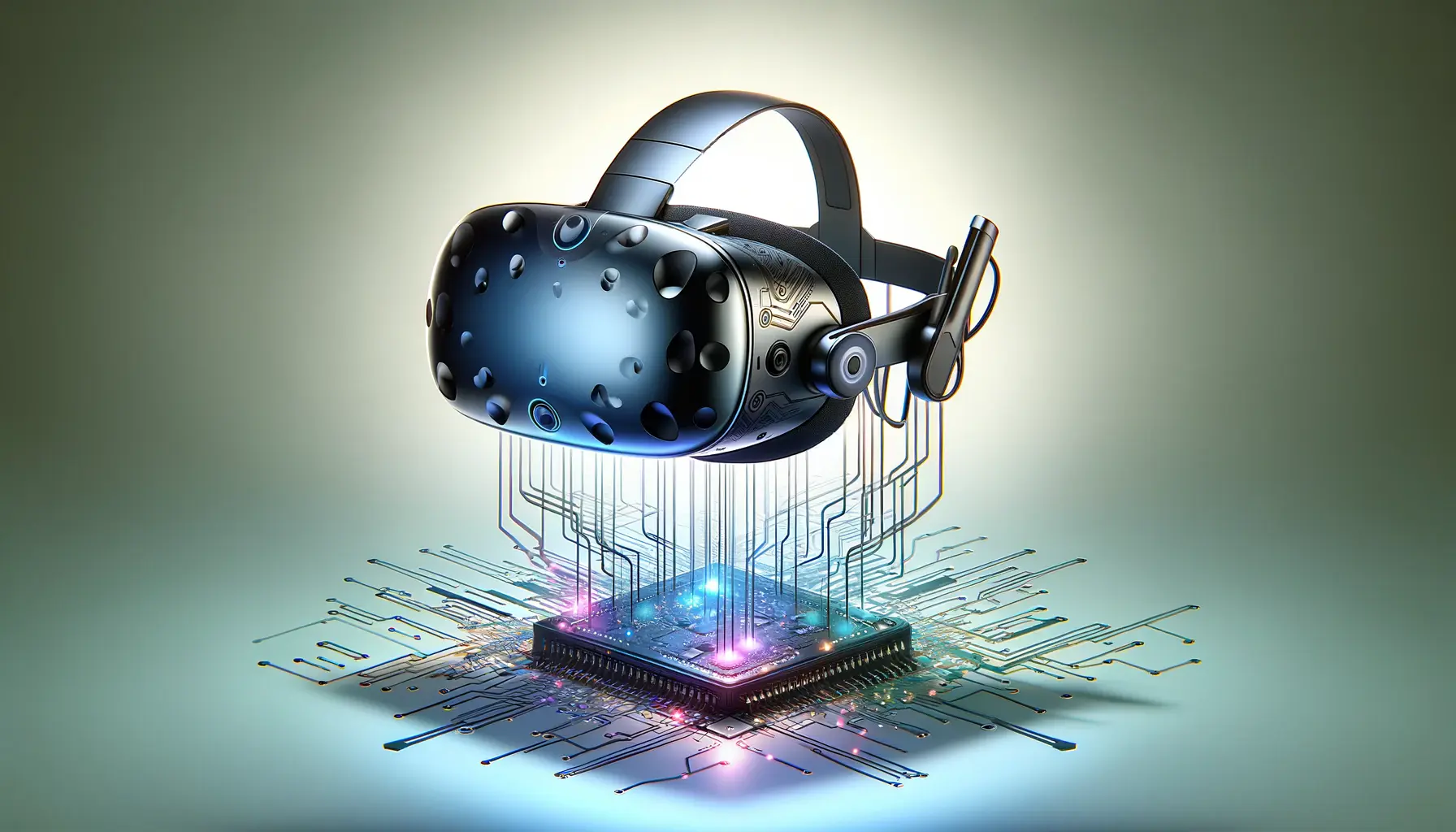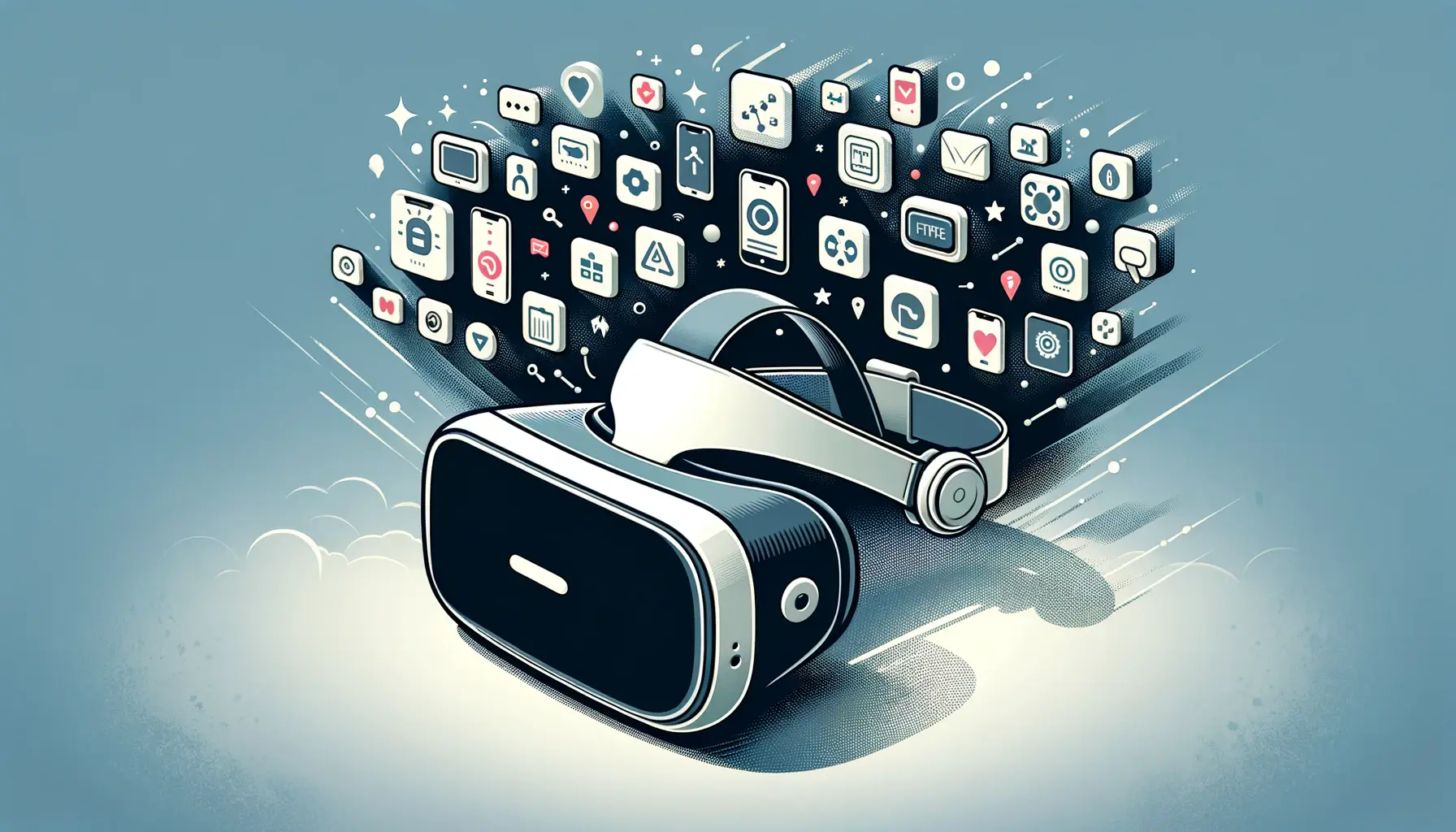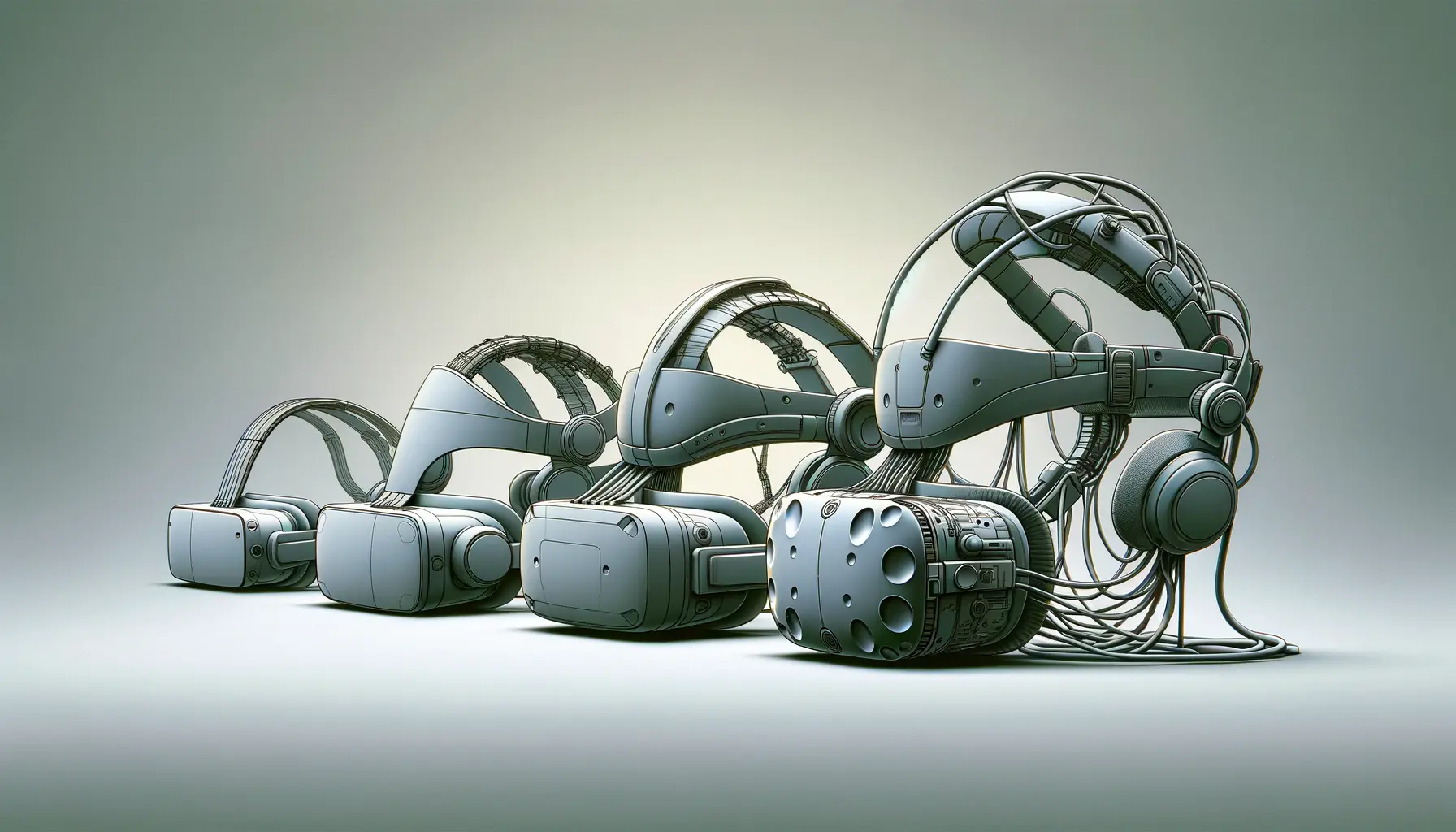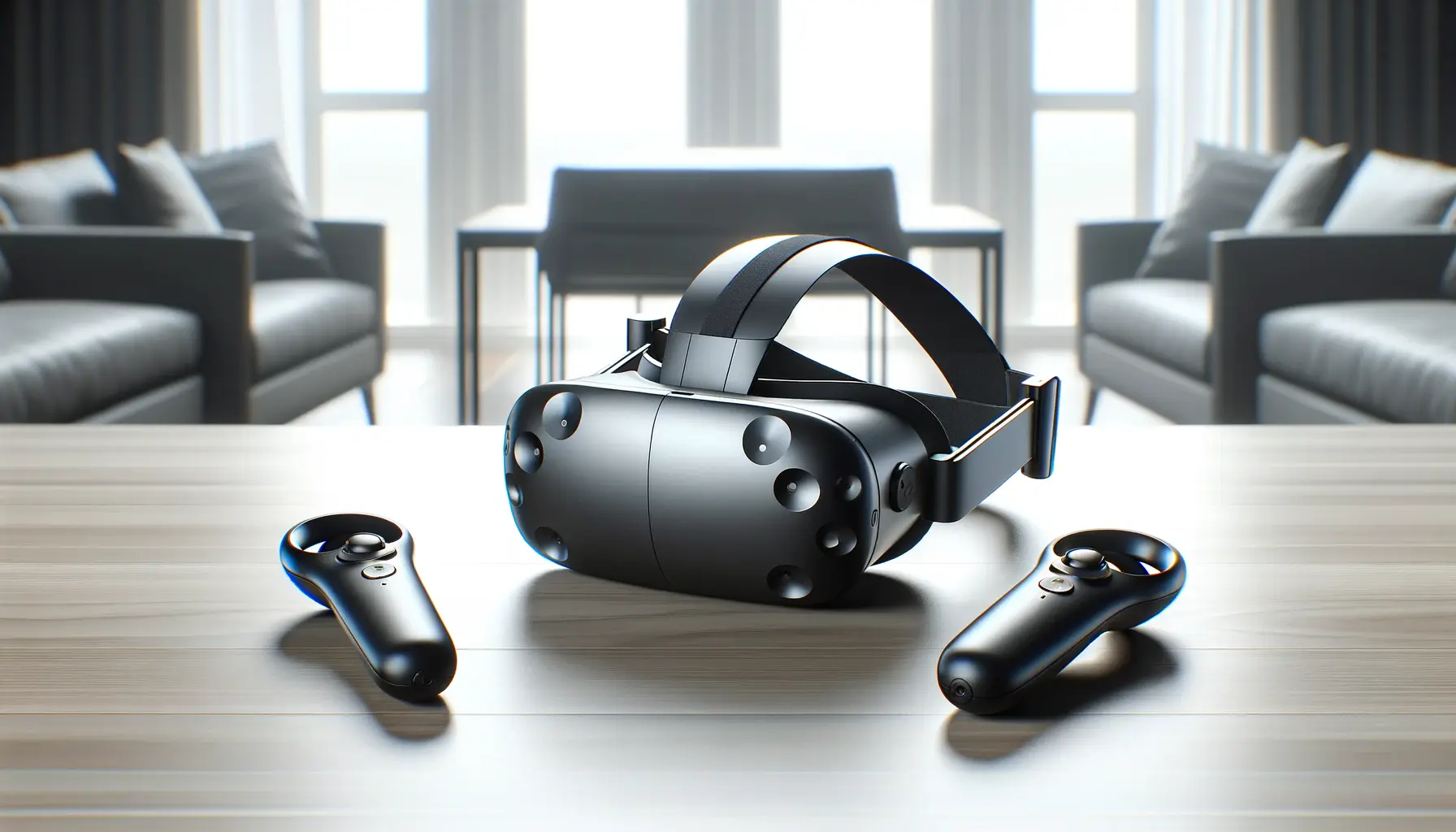The integration of virtual reality (VR) into educational settings has been a topic of increasing interest among educators, technologists, and policymakers alike.
The Meta Quest 3, the latest iteration in the line of VR headsets from Meta (formerly Facebook), stands at the forefront of this technological revolution.
With its advanced features and capabilities, the Meta Quest 3 offers a unique opportunity to enhance teaching and learning experiences across various educational landscapes.
Education, as a sector, is constantly evolving, seeking innovative methods to engage students, facilitate complex learning processes, and prepare them for the challenges of the future.
The Meta Quest 3, with its immersive VR environment, provides a platform for educators to create dynamic, interactive learning experiences that can captivate students’ interests and cater to diverse learning styles.
This article explores the potential of the Meta Quest 3 within the educational sphere, highlighting its impact on teaching methodologies, student engagement, and educational outcomes.
- Exploring the Educational Landscape with Meta Quest 3
- Curriculum Integration and Content Creation
- Facilitating Collaborative Learning and Interaction
- Assessment and Feedback in VR Education
- Challenges and Solutions in VR Education
- Future Trends in VR Education
- Implementing VR in Diverse Educational Settings
- Empowering Education Through Meta Quest 3
- Meta Quest 3 in Education: FAQs
Exploring the Educational Landscape with Meta Quest 3
The Shift Towards Immersive Learning
The educational landscape is witnessing a paradigm shift towards immersive learning experiences, where students are not just passive recipients of information but active participants in their learning journeys.
The Meta Quest 3 plays a pivotal role in this transition, offering a gateway to virtual worlds where theoretical concepts can be visualized and interacted with in ways previously unimaginable.
This shift is not merely about the novelty of using new technology but about enhancing the depth and breadth of educational content accessible to students.
Immersive learning through the Meta Quest 3 enables educators to design lessons that are not only informative but also engaging and memorable.
Whether it’s exploring the intricate systems of the human body, walking through historical sites, or solving complex mathematical equations in a visually stimulating environment, the possibilities are endless.
This approach to learning can significantly improve students’ understanding and retention of complex subjects.
Enhancing Student Engagement and Motivation
One of the most significant challenges in education is maintaining student engagement and motivation.
The Meta Quest 3 addresses this challenge head-on by transforming the learning environment into an interactive and enjoyable experience.
By leveraging the immersive capabilities of VR, educators can create compelling educational content that sparks curiosity and inspires a love for learning.
This is particularly effective for subjects that students typically find challenging or uninteresting, as the interactive nature of VR can make learning more accessible and fun.
Moreover, the Meta Quest 3 allows for personalized learning experiences, catering to the individual needs and learning paces of students.
This personalization is crucial in fostering an inclusive educational environment where every student has the opportunity to succeed.
The ability to adjust difficulty levels, provide instant feedback, and tailor learning pathways ensures that students remain engaged and motivated throughout their educational journey.
The Meta Quest 3’s immersive VR technology offers a transformative approach to education, making learning more engaging, accessible, and tailored to individual student needs.
Curriculum Integration and Content Creation
The successful integration of Meta Quest 3 into educational curriculums hinges on the development and availability of quality VR content that aligns with educational standards and objectives.
This section delves into the processes and considerations involved in curriculum integration and the creation of engaging VR content for education.
Developing VR-Enhanced Curriculums
Integrating VR technology into the curriculum requires a thoughtful approach that considers the educational goals, subject matter relevance, and the added value of immersive experiences.
Educators and curriculum developers must work together to identify areas within the curriculum where VR can provide significant learning enhancements.
This could involve:
- Conceptualizing immersive experiences that align with learning objectives.
- Ensuring VR content complements existing teaching methods and materials.
- Assessing the feasibility and accessibility of VR experiences for all students.
The goal is to create a seamless blend of traditional and innovative teaching methods that enrich the educational experience without overwhelming teachers and students with technology.
Content Creation for VR Learning
Creating compelling and educational VR content is central to leveraging the full potential of the Meta Quest 3 in education.
This involves not only technical expertise but also a deep understanding of pedagogical principles.
Key considerations include:
- Designing interactive and immersive content that encourages exploration and discovery.
- Ensuring content is age-appropriate, accessible, and inclusive for a diverse student population.
- Incorporating assessment tools within VR experiences to track learning progress.
Collaboration between educators, VR developers, and subject matter experts is crucial in developing content that is not only technologically advanced but also pedagogically sound and engaging for students.
Effective curriculum integration and content creation are essential for maximizing the educational benefits of the Meta Quest 3, requiring a collaborative approach to ensure relevance, engagement, and accessibility.
Facilitating Collaborative Learning and Interaction
The Meta Quest 3’s capabilities extend beyond individual learning experiences, fostering collaborative learning environments where students can interact with each other and their instructors in real-time, regardless of physical location.
This aspect of VR technology has the potential to revolutionize the way collaborative learning is facilitated in educational settings.
Collaborative learning in VR offers a unique set of advantages that can enhance educational outcomes.
It allows for the simulation of complex, real-world scenarios where students can work together to solve problems, conduct experiments, or engage in debates within a controlled, immersive environment.
This not only enhances learning but also helps in developing essential soft skills such as teamwork, communication, and problem-solving.
Creating Interactive Learning Spaces
The design of interactive learning spaces within the Meta Quest 3 environment requires careful planning and execution.
These spaces should be:
- Engaging and relevant to the curriculum.
- Designed to promote interaction and collaboration among students.
- Equipped with tools and features that facilitate communication and project management.
Such environments can mimic real-life settings or fantastical landscapes, providing a backdrop for collaborative projects and discussions that engage students in a deep and meaningful way.
Overcoming Physical Boundaries
One of the most significant benefits of VR in education is its ability to transcend physical boundaries, making collaborative learning accessible to students from different geographical locations.
This global classroom concept not only broadens the educational experience but also fosters cultural exchange and understanding among students worldwide.
By leveraging the Meta Quest 3, educators can create international collaboration projects, global science fairs, or virtual exchange programs, providing students with exposure to diverse perspectives and ideas.
This global connectivity is invaluable in preparing students for a world that is increasingly interconnected and multicultural.
The Meta Quest 3’s immersive VR environment opens up new avenues for collaborative learning, breaking down physical barriers and fostering a global learning community.
Assessment and Feedback in VR Education
Assessment and feedback mechanisms are crucial components of the educational process, providing insights into student learning progress and areas needing improvement.
The Meta Quest 3 offers innovative approaches to conducting assessments and delivering feedback within the VR environment, potentially transforming how educators evaluate student performance and understanding.
Integrating assessment tools into VR experiences allows for a more dynamic and interactive evaluation process.
Unlike traditional testing methods, VR assessments can simulate real-life tasks or problems, offering a more accurate measure of a student’s practical skills and knowledge application.
This section explores how the Meta Quest 3 facilitates these advanced assessment and feedback strategies.
Immersive Assessment Techniques
The use of immersive assessment techniques in VR can significantly enhance the accuracy and relevance of educational evaluations.
These techniques include:
- Real-time performance tracking, where educators can monitor students’ actions and decisions within the VR environment to assess their understanding and skills.
- Scenario-based assessments, which place students in simulated situations requiring them to apply their knowledge to solve problems or make decisions.
- Interactive quizzes and challenges integrated within the VR experience, making the assessment process engaging and less intimidating for students.
Such immersive assessments provide a comprehensive view of a student’s abilities, going beyond rote memorization to evaluate critical thinking, problem-solving, and application skills.
Personalized Feedback Mechanisms
Feedback is an essential element of the learning process, guiding students in their learning journey and helping them understand their strengths and weaknesses.
The Meta Quest 3 enables the delivery of personalized, immediate feedback directly within the VR environment.
This can take the form of:
- Automated feedback based on performance metrics, offering instant responses to students’ actions.
- Personalized guidance from educators, who can enter the VR environment alongside students to provide real-time coaching and support.
- Peer feedback mechanisms, where students can review and comment on each other’s work within a collaborative VR setting.
This immediate and personalized feedback approach helps students quickly identify areas for improvement and apply corrections, enhancing the learning experience and fostering a growth mindset.
The Meta Quest 3’s VR technology revolutionizes assessment and feedback methods, offering more relevant, engaging, and personalized approaches to evaluating student learning.
Challenges and Solutions in VR Education
While the adoption of VR technology like the Meta Quest 3 in educational settings offers numerous benefits, it also presents a set of challenges that educators and institutions must navigate.
These challenges range from technical issues to accessibility concerns, each requiring thoughtful solutions to ensure the effective integration of VR into the curriculum.
This section outlines some of the primary challenges associated with VR education and proposes potential solutions to overcome these obstacles, thereby maximizing the educational potential of the Meta Quest 3.
Technical Requirements and Support
One of the main challenges in implementing VR in education is the technical requirements, including hardware, software, and adequate internet bandwidth.
The Meta Quest 3, while being a standalone device, may still require additional resources for optimal operation, especially when used in a classroom setting.
- Solution: Institutions can invest in the necessary infrastructure and provide training for educators to ensure smooth operation. Additionally, leveraging cloud-based VR content can minimize local storage and processing requirements.
Accessibility and Inclusivity
Ensuring that VR education is accessible and inclusive for all students, regardless of their physical abilities or socio-economic backgrounds, is another significant challenge.
The cost of VR equipment and the design of VR experiences can inadvertently exclude some students.
- Solution: Schools and educational institutions can explore funding options, grants, and partnerships with technology companies to subsidize the cost of VR equipment. Furthermore, VR content creators should adhere to universal design principles, making VR experiences accessible to students with disabilities.
Curriculum Integration
Integrating VR technology into existing curriculums in a way that complements and enhances traditional teaching methods rather than replacing them can be challenging.
Educators may also be hesitant to adopt new technologies due to a lack of familiarity or training.
- Solution: Professional development programs and workshops for educators can demystify VR technology and showcase its pedagogical benefits. Collaborative efforts between curriculum developers, educators, and VR experts can ensure that VR content aligns with educational standards and learning objectives.
Addressing the challenges of technical requirements, accessibility, and curriculum integration is crucial for the successful adoption of VR education technologies like the Meta Quest 3.
Future Trends in VR Education
The landscape of education is continually evolving, with virtual reality (VR) playing an increasingly significant role in shaping future educational experiences.
The Meta Quest 3, as a leading VR platform, not only exemplifies current capabilities but also hints at future trends in VR education.
These trends promise to further transform learning environments, making them more immersive, interactive, and personalized.
This section explores the emerging trends in VR education and how they might influence the development of educational content, teaching strategies, and student engagement in the coming years.
Increased Personalization and Adaptivity
One of the most promising trends in VR education is the move towards more personalized and adaptive learning experiences.
VR technology, including platforms like the Meta Quest 3, enables the creation of learning environments that adjust in real-time to the learner’s needs, preferences, and performance.
This could involve:
- Adaptive learning paths that modify content difficulty and presentation based on student performance.
- Personalized feedback mechanisms providing targeted advice and encouragement.
- Immersive simulations tailored to individual learning styles and interests.
Such personalization enhances engagement and effectiveness, allowing students to learn at their own pace and in ways that best suit their learning styles.
Integration with Other Technologies
The integration of VR with other emerging technologies such as artificial intelligence (AI), augmented reality (AR), and blockchain could further enhance educational experiences.
For instance:
- AI could be used to create dynamic, intelligent characters and scenarios within VR simulations, offering more realistic and engaging learning experiences.
- AR and VR could be combined to create mixed reality (MR) experiences, blending physical and virtual learning environments.
- Blockchain technology could secure and verify educational achievements and credentials within VR platforms.
This convergence of technologies will likely lead to more immersive, interactive, and secure educational platforms that extend beyond the capabilities of current VR systems.
Global Collaboration and Accessibility
As VR technology becomes more widespread and accessible, its potential for fostering global collaboration and accessibility in education will increase.
The Meta Quest 3 and similar platforms could enable students from around the world to participate in shared virtual classrooms, work on collaborative projects, and engage in cultural exchange programs, all within immersive VR environments.
- Such global classrooms can break down geographical and socio-economic barriers to education, providing equal learning opportunities to students regardless of their location or background.
These future trends in VR education highlight the potential for continued innovation and growth in the field, with the Meta Quest 3 playing a key role in driving forward these advancements.
The future of VR education is bright, with trends towards increased personalization, technological integration, and global collaboration promising to make learning more engaging, effective, and accessible for all.
Implementing VR in Diverse Educational Settings
The versatility of the Meta Quest 3 allows for its application across a wide range of educational settings, from primary schools to higher education and beyond.
Implementing VR technology in these diverse environments can enhance learning experiences, making education more engaging, interactive, and effective.
This section explores the practical aspects of deploying the Meta Quest 3 in various educational contexts and the unique benefits it offers to each.
Primary and Secondary Education
In primary and secondary education, the Meta Quest 3 can bring subjects to life, making learning more engaging and interactive for younger students.
Applications include:
- Virtual field trips to historical sites, museums, and natural wonders, providing students with immersive learning experiences that are otherwise impossible due to geographical or financial constraints.
- Interactive science experiments in virtual labs, allowing students to explore and experiment in a safe and controlled environment.
- Mathematical visualization, where abstract concepts are represented in three-dimensional space, enhancing understanding and retention.
These applications not only enrich the curriculum but also cater to different learning styles, ensuring that all students have the opportunity to succeed.
Higher Education and Vocational Training
In higher education and vocational training, the Meta Quest 3 can simulate real-world scenarios and complex processes, providing students with hands-on experience in their field of study.
Examples include:
- Medical and healthcare training simulations, where students can practice surgical procedures or patient care in a risk-free environment.
- Engineering and architecture projects, allowing students to design and interact with their creations in a virtual space.
- Language and cultural immersion programs, where students can practice language skills and cultural understanding in realistic settings.
This practical experience is invaluable, preparing students for the workforce and giving them a competitive edge in their careers.
Continuing Education and Professional Development
The Meta Quest 3 also has significant applications in continuing education and professional development, offering flexible and accessible learning opportunities for adults looking to advance their careers or acquire new skills.
VR can facilitate:
- Professional skill development in a wide range of industries, from IT to creative arts, through immersive workshops and tutorials.
- Corporate training programs, enabling companies to train employees in soft skills, technical skills, and company-specific processes in an engaging and cost-effective manner.
- Lifelong learning opportunities, allowing individuals to explore new interests and hobbies in an interactive and immersive way.
The implementation of the Meta Quest 3 in these diverse educational settings demonstrates the broad potential of VR technology to transform learning experiences across the educational spectrum, making education more accessible, engaging, and effective for learners of all ages.
The Meta Quest 3’s application in various educational settings highlights its potential to revolutionize learning experiences, making education more immersive, practical, and accessible for all learners.
Empowering Education Through Meta Quest 3
The integration of Meta Quest 3 into educational settings marks a significant leap forward in how we approach learning and teaching.
This article has explored the multifaceted potential of Meta Quest 3 in revolutionizing educational experiences, highlighting its impact on student engagement, curriculum development, collaborative learning, and much more.
As we stand on the brink of a new era in education, it’s clear that VR technology, epitomized by the Meta Quest 3, offers unparalleled opportunities for enhancing and transforming educational landscapes.
Reimagining Learning Environments
The immersive capabilities of Meta Quest 3 have shown us that the future of education lies beyond the traditional classroom walls.
By facilitating virtual field trips, interactive simulations, and global classrooms, Meta Quest 3 enables educators to create engaging and dynamic learning experiences.
These immersive environments not only enhance student engagement but also cater to diverse learning styles, ensuring that education is accessible and effective for every student.
Challenges as Stepping Stones
Despite the promising potential of Meta Quest 3 in education, challenges such as technical requirements, accessibility, and curriculum integration persist.
However, these challenges are not insurmountable.
With continued innovation, collaboration, and investment in VR technologies, we can overcome these obstacles.
Solutions like cloud-based VR content, universal design principles, and professional development programs for educators are already paving the way for a more inclusive and effective integration of VR in education.
- Technical advancements and cloud-based solutions are reducing the barriers to VR adoption in schools.
- Universal design principles in VR content creation ensure that learning experiences are accessible to all students.
- Professional development and collaborative efforts between educators and VR developers are crucial for seamless curriculum integration.
The Road Ahead
As we look to the future, the role of Meta Quest 3 and similar VR technologies in education will only grow.
The trends towards increased personalization, integration with other technologies, and global collaboration point to a future where learning is more immersive, interactive, and inclusive.
The potential for VR to transform educational outcomes is immense, offering students not just knowledge, but experiences that prepare them for the challenges and opportunities of the future.
In conclusion, the Meta Quest 3 for education represents a significant step forward in our quest to enhance learning experiences.
It embodies the potential of VR to make education more engaging, accessible, and effective.
As we continue to explore and expand the capabilities of this technology, the future of education looks brighter and more promising than ever.
The journey of integrating Meta Quest 3 into educational settings is just beginning, and the possibilities are as limitless as our imagination.
Meta Quest 3 in Education: FAQs
Explore common questions about integrating Meta Quest 3 into educational settings, providing insights into its application and benefits.
Meta Quest 3 enhances learning by providing immersive experiences that increase engagement, improve retention, and make complex concepts more accessible.
While Meta Quest 3 offers educational content for various age groups, it’s essential to select age-appropriate experiences and monitor usage.
Yes, Meta Quest 3 can be used across subjects, offering versatile applications from science and math to history and language arts.
The cost of Meta Quest 3 starts at $499, with additional expenses for educational content and accessories.
Educators integrate Meta Quest 3 by aligning VR experiences with learning objectives and incorporating them into lesson plans.
Technical support for Meta Quest 3 includes device setup, content installation, and troubleshooting, often provided by IT departments.
Meta Quest 3 promotes collaborative learning by enabling students to work together in virtual environments, regardless of physical location.
While Meta Quest 3 is designed with safety in mind, it’s crucial to follow recommended usage guidelines and supervise younger users.
